How long has it been since you basked in the sun and felt invigorated? Vitamin D is not something most of us think about until we begin experiencing symptoms like weakness, soreness, and constant low spirits. However, vitamin D is essential for both our bodies and minds, and without enough of it, the consequences can be insidious—building up over time before suddenly becoming a serious issue.
In this article, I’ll guide you on how to identify the symptoms of vitamin D deficiency and share some natural remedies that can help restore your levels before it leads to other health problems. Whether you’re looking to understand your blood work or simply wondering what’s causing that constant fatigue, this breakdown has you covered.
What is Vitamin D and Why Is It So Important?
Vitamin D is commonly known as the “sunshine vitamin” because your body produces it when exposed to sunlight. However, it is not just a buzzword you hear on health podcasts—it’s a fat-soluble vitamin with significant roles in your overall health. Here’s how vitamin D works in your body:
- Aids in calcium absorption: This supports bone strength and density.
- Regulates your immune system: Helping the body fight off infections.
- Contributes to mood balance: It may help alleviate the symptoms of depression.
- Aids muscle coordination: And even plays a role in mental clarity.
Unlike other vitamins that come from food, vitamin D’s most natural source is sunlight. Unfortunately, modern lifestyles—where sunscreen, air pollution, and staying indoors are common—have led to alarming vitamin D deficiencies, even in sunny countries.
What Causes Vitamin D Deficiency?
It may seem like getting a little sunshine—perhaps a brief walk in the park once a week—is enough to meet your vitamin D needs. Sadly, for most people, it’s not. Here are some of the most common causes that lead to vitamin D deficiency:
1. Limited Sun Exposure
Spending most of your time indoors, living in a cloudy climate, or wearing protective clothing that covers most of your skin may prevent you from absorbing enough UVB rays, the sunlight needed for vitamin D production.
2. Darker Skin
Melanin, the pigment responsible for darker skin, reduces your skin’s ability to produce vitamin D from sunlight. Individuals with darker skin—such as African Americans, Asians, and Hispanics—usually need more time in the sun to produce the same amount of vitamin D compared to people with lighter skin.
3. Aging
As we age, our skin becomes less efficient at synthesizing vitamin D. Older adults often spend less time outdoors, and their diets may not include enough of the nutrients needed to support healthy vitamin D levels.
4. Obesity
Vitamin D is stored in fat tissue, meaning that individuals with higher body fat may end up trapping vitamin D in their fat cells, making it less available to the body for use.
5. Digestive and Kidney Issues
Certain diseases, such as Crohn’s disease, celiac disease, and chronic kidney disease, can impair the body’s ability to absorb or convert vitamin D into its active form.
Who Is Most at Risk?
While not everyone experiences vitamin D deficiency, certain groups of people are at a significantly higher risk. If you belong to any of the following categories, you may want to be particularly mindful of your vitamin D intake:
- Individuals living in colder climates: People living in northern regions with shorter days of sunlight may struggle to get enough vitamin D.
- People who apply sunscreen daily or cover most of their skin: Sunscreen, while important for protecting the skin from harmful UV rays, can also reduce the skin’s ability to produce vitamin D from sunlight.
- Individuals with chronic digestive or kidney conditions: Those suffering from conditions like Crohn’s disease, celiac disease, or chronic kidney disease may have difficulty absorbing or converting vitamin D.
- Seniors over 65: As we age, our skin becomes less efficient at synthesizing vitamin D, and older adults often spend less time outdoors.
- Infants who are exclusively breastfed: Babies who are not exposed to vitamin D through sunlight or fortified formula may be at risk if they do not receive adequate supplementation.
- People who are obese or have Type 2 diabetes: Vitamin D can become trapped in fat tissue, making it less available for the body to use.
Common Signs and Symptoms of Vitamin D Deficiency
Vitamin D deficiency is often a silent troublemaker. Its symptoms may not be immediately obvious—they might manifest as mild, consistent discomfort that you might not attribute to a specific cause. If you’ve been feeling “off” lately, vitamin D deficiency might be to blame. Here are some of the common signs and symptoms to watch out for:
Common Symptoms of Vitamin D Deficiency vs. Similar Conditions
| Symptom | Possible Link to Vitamin D Deficiency | Also Seen In |
|---|---|---|
| Fatigue and tiredness | Reduced muscle energy and immune function | Anemia, thyroid disorders |
| Bone and back pain | Poor calcium absorption, bone softening | Arthritis, sciatica |
| Mood changes, depression | Vitamin D affects serotonin pathways | Clinical depression, hormonal shifts |
| Frequent colds or flu | Weakened immunity | Chronic stress, lack of sleep |
| Muscle weakness | Disrupted neuromuscular function | Electrolyte imbalance, MS |
| Slow wound healing | Vitamin D aids in skin repair and inflammation | Diabetes, poor circulation |
| Hair loss | Linked to autoimmune disorders | Thyroid issues, stress |
| Brain fog or forgetfulness | Inflammation affecting cognitive clarity | ADHD, sleep disorders |
Vitamin D deficiency is often a silent issue, with symptoms that can easily be mistaken for other disorders. As a result, it’s not until a blood test is conducted that most people realize they have a deficiency. If you’re consistently experiencing more than two or three of the symptoms listed earlier, it’s worth investigating further to ensure you’re not dealing with vitamin D deficiency.
How Serious Can It Get?
If left untreated, vitamin D deficiency can lead to more than just feeling off—it can result in serious health complications over time. Here’s what might happen if your body remains deficient for months or even years:
🔹 Osteomalacia and Osteoporosis
Low vitamin D weakens bone A lack of vitamin D weakens bone mineralization, leading to soft bones (osteomalacia) in adults and brittle bones (osteoporosis) in older adults, making fractures more likely.
, leading to soft bones (osteomalacia) in adults and fragile bones (osteoporosis) in older adults.
🔹 Compromised Immunity
Vitamin D is crucial for a healthy immune system. Without enough, your body becomes more vulnerable to infections, colds, respiratory illnesses, and autoimmune issues.
🔹 Increased Risk of Heart Disease
Low vitamin D levels have been associated with increased risks of hypertension, heart failure, and signs of inflammation, which can all contribute to cardiovascular diseases.
🔹 Mood Disorders
Vitamin D deficiency is linked to mood disorders such as seasonal affective disorder (SAD), depression, and anxiety—particularly during the winter months when sunshine is scarce.
🔹 Pregnancy Complications
Pregnant women with vitamin D deficiency are at higher risk of preeclampsia, gestational diabetes, and fetal bone deformities.
Getting Diagnosed: The Right Way to Know
You can’t rely on how you feel to determine your vitamin D levels. The most accurate way to assess deficiency is through a blood test that measures the 25-hydroxyvitamin D (25(OH)D) level. Vitamin D levels are generally classified as follows:
- Less than 20 ng/mL: Deficient
- 20–30 ng/mL: Insufficient
- 30–50 ng/mL: Normal range
- More than 50 ng/mL: Optimal for most individuals
- Above 100 ng/mL: Potentially harmful (rare)
If your levels are low or insufficient, your doctor will likely recommend natural remedies or supplements based on the severity of your deficiency.
What Happens If You’re Vegan or Vegetarian?
The majority of natural vitamin D sources come from animal products, such as fish, eggs, liver, and fortified dairy products. This leaves plant-based eaters more vulnerable unless they actively consume supplements or fortified foods like soy milk and cereal.
For vegans, one option to consider is UV-exposed mushrooms, which provide a vegan form of vitamin D2. While the D2 form is not as potent as D3, it still helps.
✅ Rebuilding Vitamin D the Natural Way

The good news is that correcting a vitamin D deficiency is neither complex nor expensive for most people. By gradually increasing your vitamin D levels through safe methods, you can rebuild your health without risk. Here are some strategies to improve your vitamin D levels:
- Get Sun Exposure: Aim for regular, safe sun exposure to allow your body to produce vitamin D naturally.
- Eat Vitamin D-Rich Foods: Incorporate more foods like fatty fish, fortified dairy, eggs, and mushrooms into your diet.
- Consider Supplements: If you’re unable to get enough vitamin D from sun exposure or food, your doctor may recommend supplements.
By following these strategies, you can slowly and safely increase your vitamin D levels and improve your overall health.
☀️ 1. Smart Sun Exposure: Your Primary Source
When it comes to getting enough vitamin D, the best source is the one that nature provides: sunlight. The UVB rays from the sun interact with cholesterol in your skin to produce vitamin D3, the most effective form of the vitamin.
When and How to Soak It In
UVB rays are best absorbed in the middle of the day, typically between 10 AM and 2 PM. The amount of time you need to spend in the sun depends on your skin tone:
- Fairer skin: May need less time (around 10 minutes)
- Darker skin: May require more time to produce adequate vitamin D (up to 30 minutes)
It’s important to expose not only your face and hands but also other areas like your arms, legs, or back for better absorption.
- No sunscreen: Avoid sunscreen during this time to allow the UVB rays to penetrate your skin. However, be cautious not to stay out long enough to get burned.
- Important reminder: UVB rays do not pass through glass windows, so indoor sunbathing near a window won’t work.
🧂 2. Eat Your Sunshine: Food Sources of Vitamin D
Another great way to boost your vitamin D levels is through food. While not many foods naturally contain vitamin D, there are several excellent options that can help you increase your intake. If you make these foods a regular part of your diet, you can maintain healthy vitamin D levels.
Here’s a pragmatic overview of vitamin D-rich foods:
📊 Top Natural Foods Rich in Vitamin D
| Food | Vitamin D (IU per serving) | Serving Size | Notes |
|---|---|---|---|
| Salmon (wild-caught) | 570–700 IU | 3.5 oz (100 g) | Best natural source; aim 2–3x/week |
| Sardines (canned) | 270 IU | 2 fish | Affordable and nutrient-dense |
| Cod Liver Oil | 450–1300 IU | 1 tsp | Highly potent; use in moderation |
| Fortified Cow’s Milk | 115–130 IU | 1 cup | Check labels; not all brands fortify |
| Egg yolks | 40–50 IU | 1 egg | Free-range eggs have slightly more |
| Fortified Plant Milks | 100–144 IU | 1 cup | Almond, oat, soy — great vegan option |
| Mushrooms (UV-exposed) | 150–450 IU | ½ cup cooked | Only UV-exposed varieties are effective |
Vitamin D is essential for overall health, and there are several ways to naturally boost your levels. From delicious meals to smart supplements, and simple lifestyle habits, here’s everything you need to know.
Vitamin D-Rich Foods for Your Diet
If you’re looking to increase your vitamin D intake, here are a few tasty and nutritious meal ideas to help you along the way:
- Grilled Salmon Salad: Have a grilled salmon salad for lunch or dinner. Salmon is rich in vitamin D and provides a healthy, flavorful way to meet your vitamin D needs.
- Scrambled Eggs with UV Mushrooms: For breakfast, try scrambled eggs mixed with UV-exposed mushrooms. This is a great way to get some vitamin D first thing in the morning.
- Fortified Plant Milk Smoothies: Combine plant-based, fortified milk with your smoothies for an extra vitamin D boost. Look for varieties that have added vitamin D to help meet your daily requirements.
- Cod Liver Oil: Cod liver oil is an incredibly powerful source of vitamin D. However, it should only be used under a doctor’s prescription, as it is potent and should be carefully monitored.
💊 3. Should You Use Supplements?
For some individuals, diet and sunlight exposure alone may not be enough to maintain adequate vitamin D levels. Supplements can help in cases where sunlight is limited, absorption is an issue, or if you have darker skin.
Key Guidelines for Vitamin D Supplements:
- Opt for Vitamin D3 (Cholecalciferol): D3 is more effective than D2 (Ergocalciferol) and is the preferred option.
- Recommended Dose: Most adults should aim for 600-2000 IU per day. However, if you’re severely deficient, doctors may temporarily prescribe up to 5000 IU.
- Take with Fat: Vitamin D is fat-soluble, so it should be taken with meals containing fat to enhance absorption.
- Pair with Magnesium and Vitamin K2: These can help maximize absorption and balance calcium levels in your body.
- Watch for Toxicity: Over-supplementation can lead to toxicity. Always follow the recommended dosage, and never exceed it without a doctor’s guidance.
🧘♂️ 4. Lifestyle Tweaks to Retain Healthy Levels
Small daily habits can make a big difference in maintaining healthy vitamin D levels. Here’s how you can support your body naturally:
- Hydration + Exercise: Dehydration and lack of movement can decrease your body’s ability to utilize nutrients. Aim to take short walks, even for just 15 minutes a day, to benefit both your skin and bones.
- Limit Junk Foods: Excess sugar and ultra-processed foods can create inflammation and interfere with nutrient absorption. Focus on whole foods like vegetables, fruits, seeds, and lean proteins.
- Gut Health: Vitamin D absorption relies heavily on gut health. Include probiotics in your diet, such as yogurt, kefir, and fermented vegetables, to support your digestive system.
- Rest and Sleep: Lack of sleep disrupts hormone function and weakens immunity. Aim for 7-9 hours of sleep each night to restore balance and optimize your nutrient levels.
🗓️ 7-Day Vitamin D Optimization Plan
This simple plan can help restore your vitamin D levels through balanced sun exposure, diet, and exercise:
Rest and Hydration: Make sure you stay hydrated and get 7-9 hours of sleep each night.
Daily Sun Exposure: Try to get 10-30 minutes of sunlight each day, depending on your skin tone. Avoid sunscreen during this time (but don’t burn).
Vitamin D-Rich Foods: Incorporate more vitamin D-rich foods like salmon, eggs, and fortified plant-based milk into your meals.
Exercise: Aim for at least 15 minutes of outdoor walking or other physical activities.
Weekly Vitamin D Optimization Schedule
| Day | Sunlight Goal | Meal Focus | Activity |
|---|---|---|---|
| Monday | 20 min midday walk | Grilled salmon + sautéed spinach | Stretch + hydration |
| Tuesday | 15 min light exposure | Scrambled eggs + fortified plant milk | Light cardio outdoors |
| Wednesday | 20 min sun on arms/legs | Tuna salad + yogurt with berries | Evening walk |
| Thursday | 10 min morning sunshine | Mushroom stir-fry + fortified cereal | Desk posture check-in |
| Friday | 25 min nature walk | Sardine sandwich + citrus fruit | Breathing meditation |
| Saturday | Optional sun if cloudy | Baked trout + leafy greens | Grocery prep |
| Sunday | Relax and assess goals | Eggs + fortified orange juice smoothie | Sleep-in or gentle yoga |
💡 Adjust sunlight based on your location and skin tone. Use SPF after your short unprotected exposure window.
🩺 When to See a Doctor
While natural methods can go a long way in boosting your vitamin D levels, there are cases where medical intervention may be necessary. If you’ve been following a healthy routine but are still experiencing symptoms, it may be time to consult a doctor.
When to Seek Medical Help
Consider consulting with a healthcare provider if:
- You’ve had symptoms for over 2 months with no improvement.
- You belong to a high-risk group (such as living in a region with limited sun exposure or having darker skin) and aren’t getting enough sunlight.
- You have chronic conditions, such as thyroid issues, autoimmune disorders, or kidney disease.
A simple 10-minute consultation and a blood test can be the tipping point in making sure that your progress is being monitored and your levels are on track.
🌿 Natural Combinations That Work Better Together
There are several nutrients and habits that can work in tandem with vitamin D to enhance its effectiveness. Here are some powerful combinations:
- Magnesium: This mineral aids in converting vitamin D into its active form.
Sources: Algae, almonds, pumpkin seeds, dark chocolate. - Vitamin K2: Helps guide calcium to your bones, rather than allowing it to deposit in your arteries.
Sources: Fermented foods like natto, sauerkraut, and hard cheeses. - Zinc and Omega-3: These nutrients support your immune system and overall cell health.
Sources: Omega-3-rich foods like flaxseeds, walnuts, and fatty fish.
✨ Realistic Progress Timeline
The process of increasing your vitamin D levels takes time and consistency. Here’s what to expect when following natural methods:
- Week 1-2: More energy, better mood, improved sleep.
- Week 3-5: Reduced muscle pain and improved immune function.
- Week 6-8: Blood tests may show an increase in vitamin D levels.
- Month 3-6: Stable mood, stronger bones, clearer skin.
Everyone’s timeline can vary, and some may see results more quickly than others. However, the key is to focus on gradual and sustainable improvements, rather than seeking quick fixes.
🔁 Maintaining Optimal Levels Year-Round
Once you’ve reached an optimal level of vitamin D, the next step is maintaining those levels consistently. Here’s how:
- Monitor your vitamin D levels: Have a blood test every 6-12 months to ensure your levels stay within the healthy range.
- Seasonal adjustments: In the winter months, consider eating more vitamin D-rich foods to compensate for the reduced sunlight.
- Make outdoor time a habit: Schedule daily outdoor time, even if it’s just a quick walk.
- Educate your family: Ensuring that everyone—especially children and seniors—understands the importance of vitamin D can improve overall health for the whole family.
🌞 Conclusion
Vitamin D is more than just a nutrient—it’s an indicator of your lifestyle. It reflects how much time you spend in nature, the quality of your diet, and how well you care for your body. By recognizing the subtle signs of vitamin D deficiency and taking simple, natural measures to restore balance, you’re committing to a lifetime of better health.
Going out in the sun, choosing vitamin D-rich foods like salmon, and supplementing your morning routine with fortified options are all simple steps to give your body what it needs to thrive.
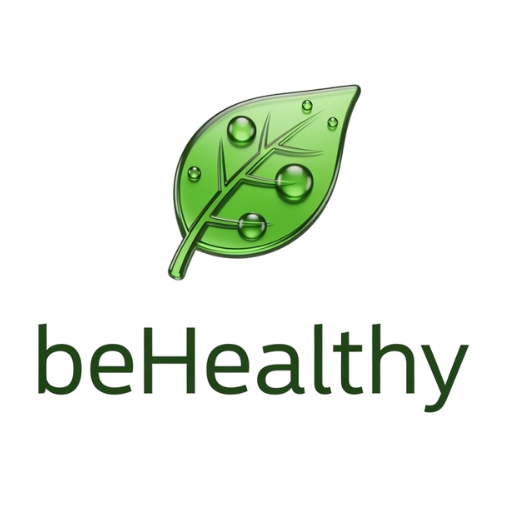


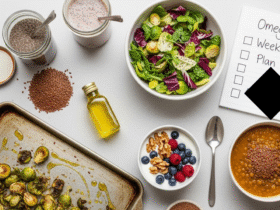

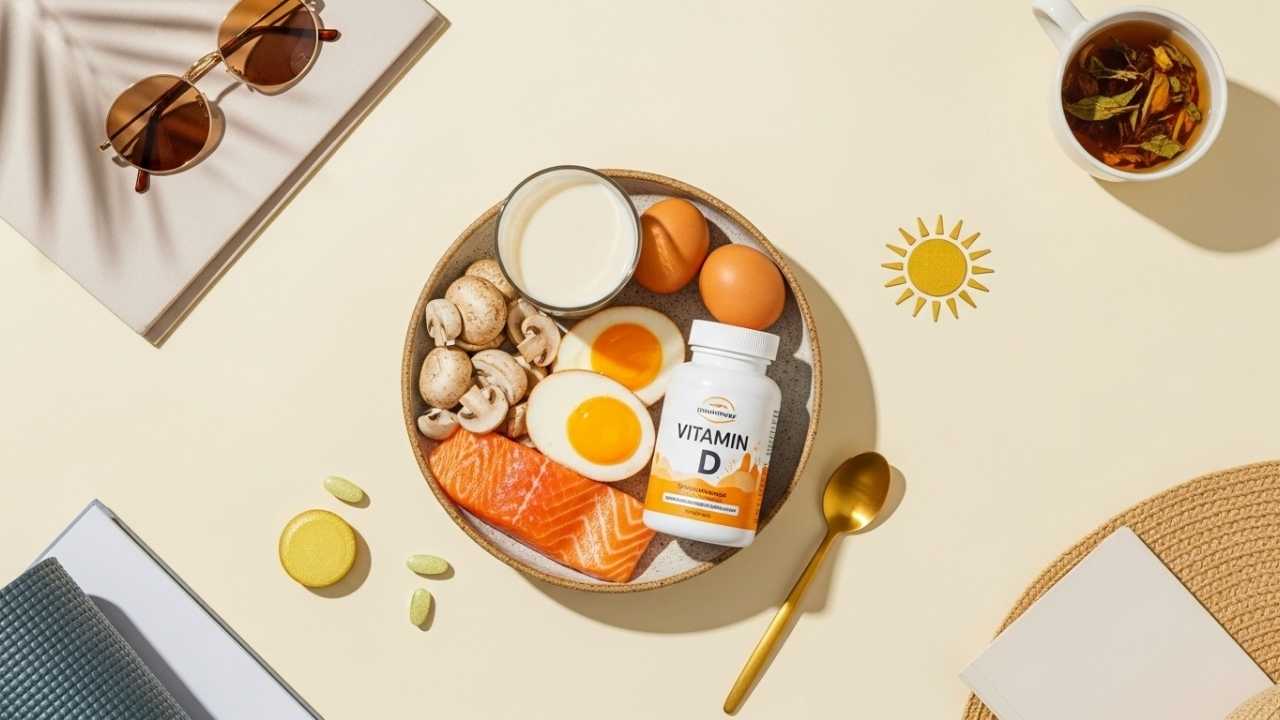




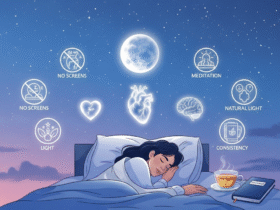
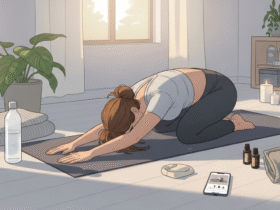
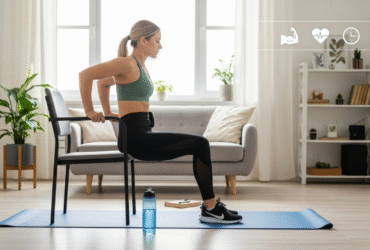
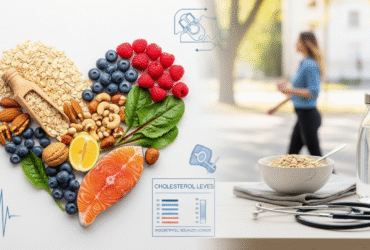

Leave a Reply